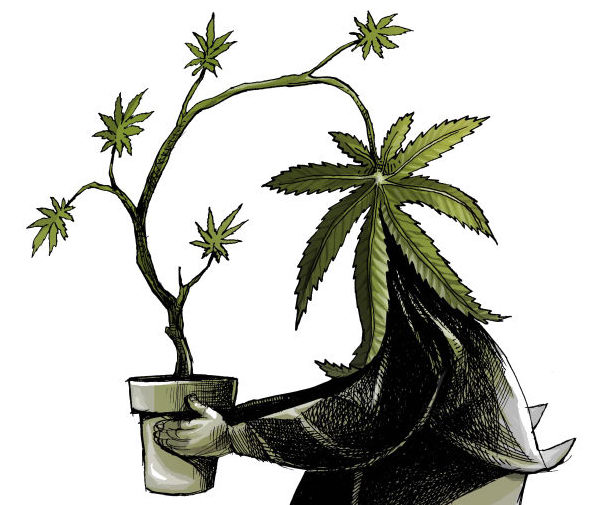Santa Barbara’s first marijuana dispensaries are a welcome addition to the community from many — but not necessarily all — perspectives. Advantages and disadvantages exist in the increased availability of legal marijuana (defined as plant-based products with more than 0.3% delta-9-tetrahydrocannabinol [THC]). We do not discuss cannabidiol (CBD), a component of cannabis plants, which lacks the high and may (or may not) have other benefits.
Perhaps the clearest benefit of legal marijuana sales is a decrease in social , legal, and economic burdens imposed by its former criminalization. Such burdens were disproportionately borne by racial minorities, who despite not selling or using marijuana more often than the population as a whole, were almost four times as likely to be arrested and incarcerated for such activities. Legalization also shifts economic benefits away from the black market and toward legal businesses, many of which are local. And Santa Barbara County will benefit (albeit much less than originally estimated) from a projected $6 million increase in tax revenues in 2019, some of which will be used in efforts to decrease the substantial illegal cultivation of marijuana that persists in Santa Barbara County. Other advantages include easier access for Santa Barbara residents and tourists who enjoy the high.
Many people use marijuana for medical reasons. However, proof of medical benefits is weak and limited to a small subset of conditions. These conditions include pain due to nerve disease, nausea, and vomiting in patients receiving cancer chemotherapy, seizures due to one rare cause, and spasticity due to multiple sclerosis.
The disadvantages of increased availability are better established, although this isn’t recognized by most Americans, whose views of marijuana are generally more positive than existing evidence supports. Due to a lack of standardized laboratory testing methodologies and varying laboratory quality, measurements of the reported potency of different strains of marijuana is often inaccurate and should be viewed with caution, as should suggestions of subtle differences in pharmacological effects.
Repeated use of marijuana in adolescence, a time when the brain is undergoing active development, seems to be associated with impaired neural connectivity in the brain and declines in IQ and school performance. Heavy use at any age can lead to heart and lung diseases, and to cannabis use disorder, defined as use despite cannabis-associated impairments in psychological, physical, and social functioning.
Even short-term use causes dose-related neurocognitive dysfunction, including impairments in motor coordination, attention, concentration, and episodic memory functions. Increased availability has led to increases in the number of hospitalizations of children (due to unintentional exposure), adolescents https://www.ncbi.nlm.nih.gov/pubmed/31418807 and adults (following intentional use). It also appears that, compared to the population as a whole, chronic cannabis users are prone to report lower life satisfaction and achievement. Marijuana may increase injuries when using motor vehicles, but the extent of this is unclear.
And as has been grimly demonstrated by the recent epidemic of a severe and sometimes fatal pulmonary disease in e-cigarette users (many of whom had vaped marijuana, but some who had not), there is still much to be learned, not only about marijuana consumption but also about delivery mechanisms. The CDC recommends that persons consider refraining from using e-cigarette, or vaping, products, particularly those containing tetrahydrocannabinol (THC).”
The arrival of legal marijuana dispensaries in Santa Barara will undoubtedly lead to increased use of marijuana, which will magnify the effects—both good and bad—outlined above. To the extent one values increased autonomy, the fact that individuals are now given free choice on marijuana use is a positive step. But that choice should be an informed one made with eyes wide open. And adolescents should be especially wary given evidence that they are particularly vulnerable to the impacts of marijuana yet increasingly blasé toward the potential harm of those impacts.

